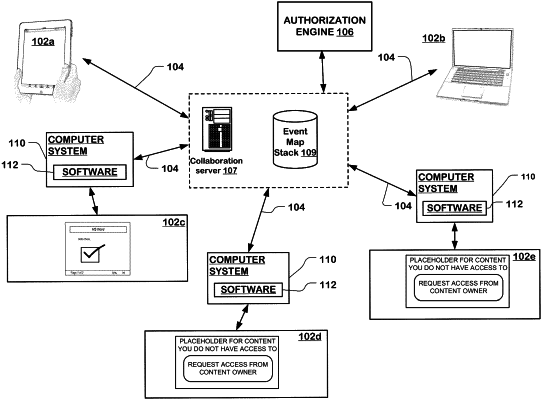| CPC G06F 21/31 (2013.01) [G06F 21/10 (2013.01)] | 48 Claims |

|
1. A method for controlling display of a workspace, comprising:
during a shared collaboration session sharing the workspace with multiple client nodes, executing a protocol to establish a first level authorization at a display client on a network node participating in the shared collaboration session for a participant operative identity (OID), the first level authorization enabling access to a workspace data set of the workspace during the shared collaboration session, the workspace data set having a plurality of entries that identify respective digital assets and locations in the workspace for graphical objects representing the respective digital assets, and wherein the plurality of entries includes a particular entry identifying a particular digital asset requiring a second level authorization;
parsing the workspace data set to identify entries for digital assets having locations within a client viewport region of the workspace;
displaying graphical objects on a display at the display client representing the identified digital assets accessible with the first level authorization;
for the particular digital asset, communicating with an authorization server to return a result indicating status of second level authorization, and
in response to a status indication that second level authorization is not established, displaying a placeholder graphical object at the display client, and
in response to a status indication that second level authorization is established,
displaying a graphical object representing the particular digital asset at the display client; and,
when a placeholder graphical object is displayed, presenting a user interface object at the display client prompting execution of a protocol to establish second level authorization, and in dependence upon establishment of the second level authorization, replacing the placeholder graphical object with the graphical object representing the particular digital asset.
|